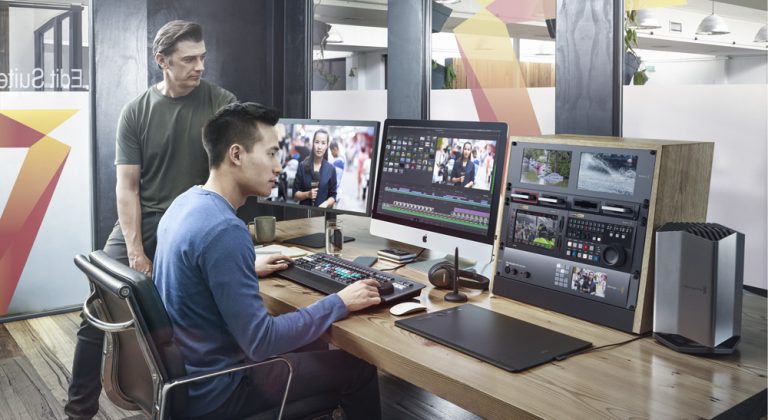With advancements in technology moving forward faster than many of us can keep up, it can become difficult to pinpoint exactly what one needs when looking at video editing software.
What hardware should you be using with what applications? What are the minimum system requirements to ensure your machine can handle the heat? Today we’re taking a look at our recommended hardware specifications to run DaVinci Resolve 16.
Minimum requirements
There may be no greater disappointment to a video editor when they realise their machine isn’t capable of running an application comfortably, if at all. Because DaVinci Resolve is such a powerful and computer intensive piece of software, making sure your PC meets the following minimum requirements is essential.
- At least an Intel Core i7 CPU (Central Processing Unit), but the best choice you could make is undoubtedly Core i9, AMD Ryzen, or AMD Threadripper. These CPU’s will ensure the fastest processing speeds when partnered with the right GPU (Graphics Processing Unit). Keep in mind that if you are using H.264 / AVC and HEVC camera media, your CPU may be doing all the decoding work long before your GPU steps in.
- At least 16GB system RAM (Random Access Memory). This is the absolute minimum RAM requirement, but we encourage you to go for 32GB on any laptop or desktop.
- The greatest investment you can make when preparing to run Resolve on your machine is your GPU. This component must have at least 4GB dedicated memory, but the best you can do is going for 8GB+ on either a mobile laptop GPU or desktop card. Make sure your CPU and RAM is sorted before moving on to this step, as it really is everything in even the most basic Resolve system!
Don’t forget that you can double up (or triple) on GPU’s! You can only benefit from having the added support to your CPU. In addition, you want to make sure you pair a dedicated GPU with the graphics card running your desktop GUI (User Interface) when it comes to a desktop PC. Performance could potentially be compromised in a laptop as it has a single integrated GPU and won’t be up to par compared to a dual or multi-GPU system.
Similarly, even though GPU cores are important, your GPU memory takes a stand above all other requirements. Aiming for at least 4GB, as mentioned above, is the absolute minimum for comfortably working with 4K timelines. Going below that, to 2GB, for example, will still provide an HD experience but will put you at a serious disadvantage if you’re looking at using plugins, the codecs of the media, and the resolution of your project.
- If you’re running Resolve on a laptop, you can expand your GPU power by plugging an external eGPU into your laptop, but it has to be over Thunderbolt 3.
- Check the data rate requirements of the media you want to process with Resolve and make sure your storage bandwidth can handle the data rates when processing in real time.
- Color, color, color. Calibration is necessary, yes, but your desktop or monitor just doesn’t cut it when you want to see the true color of your project. Consider investing in a separate video output interface, like a card or external Thunderbolt interface, as well as a calibrated reference monitor.
Note that despite this list being the bare basics you should have in place, it is possible to run the software on a PC that doesn’t meet absolutely every requirement by making modifications to some parts of your machine, like upgrading your GPU and making use of the built-in media optimization features that come with DaVinci Resolve.
What if my current PC doesn’t meet all these requirements?
The best thing to do in this situation is to invest in the necessary hardware, but where limitations hold us back, there are work arounds. Realistically, not every editor is going to 4K playback in real time unless you’re monitoring in 4K. And even then, if your footage is 4K or higher, you can do the editing in a lesser, yet still HD quality and just render at 4K later on to maximise use of your PC’s resources when you need to playback in real time without compromising on real time performance.
Important to note
When working on a laptop, an SSD or PCIe flash storage is essential to coming close to running Resolve optimally. Both these, as well as spinning disk RAID arrays, when arranged in a RAID 0 configuration is great for starting small. If you don’t have an internal SSD, an external SSD can work too, as long as it runs over Thunderbolt or at least USB 3.
Final thoughts
The main points to focus on when looking to begin or improve your PC in terms of minimum requirements when it comes to DaVinci Resolve 16, it’s your GPU and storage, followed by your CPU and system RAM, in that order.

